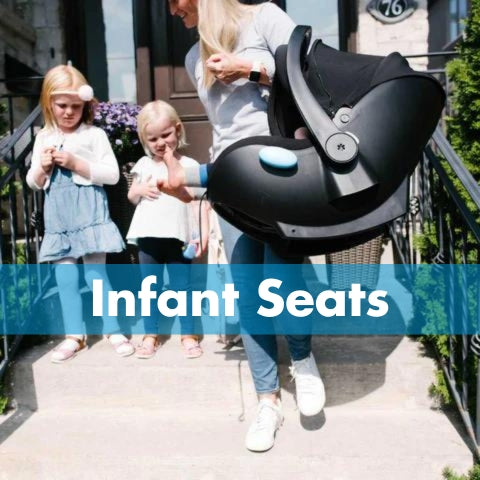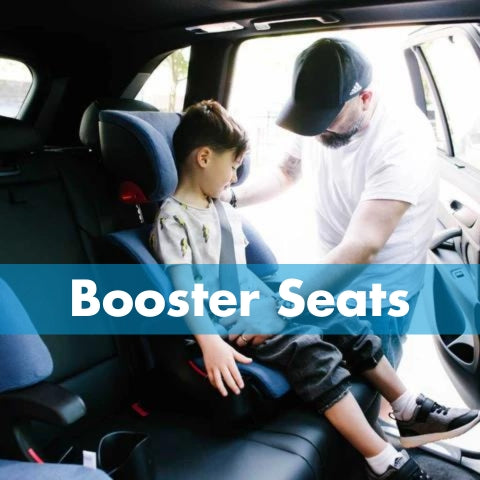With the blink of an eye your innocent little newborn has turned into a rambunctious toddler. If there is one thing that is true about the first few years of a child’s life, it’s that they go by too fast! With their fast and unexpected growth, it can be hard to keep up with all of the adjustments we need to make for them, including with their car seats. Learn about the key areas to check often as your child matures before your eyes!
Note: The information below are general guidelines. ALWAYS read your car seat manual for instructions specific to your seat.
Rear-facing Only (Infant) Seats and Convertible Seats (in rear-facing mode)

- Crotch Strap – Some car seats provide multiple slots for the crotch strap to be placed in. General rule of thumb is to keep the crotch strap in the slot that is even with or behind your child’s body. This will prevent your child from being able to slide down in the seat. If the crotch strap also offers multiple lengths, you will want to check your manual to determine which length is appropriate you’re your little one.
-
Harness Straps – Many car seats offer two different lengths for the harness straps. One is designed to fit newborns andsmaller babies, and the other will last until the seat is outgrown. Generally, these can be found at the back of the seat where you will find two loops in the harness. The inner loop will be your shorter length, the outer your longer.
- When it comes to the positioning of the harness straps, you want to ensure that they are coming from at or below your child’s shoulders as long as they are in this type of seat. Having the straps at or below the shoulders prevents the child from being able to slide up the back of the car seat in a collision and staying protected within the shell of the seat.
- Shell Height – The shell of the car seat is your child’s barrier between their body and objects in the vehicle. If your child’s head gets too close to the top of the car seat’s shell, then the seat cannot do the job it was designed to. The general rule is that you want to ensure your child has more than one inch of room above their head to the top of the car seat shell. Again, this can vary, so (are you picking up on a theme yet?) read your car seat manual to be sure of your seat’s requirements. If your child has reached the shell height limit but has not yet reached the overall weight or height limits, the seat is still outgrown and it’s time to go convertible seat shopping!
Notice we didn’t say anything about their legs? That’s because legs touching the back of the vehicle seat are in no way an indication of a seat being outgrown.
Convertible Seats (in forward-facing mode) and Combination seats (harness mode)

- Crotch Strap – When a child is forward-facing you will want to keep the crotch strap in the slot that is even with or in front of your child’s body.
- Harness Straps – Harness straps should always be positioned at or above your child’s shoulders. Once your child reaches the top slot or position for the harness slot the seat is outgrown, even if they have not hit the height or weight limit.
- Headrest – Some car seats have headrests that are attached to the harness system and move when it is adjusted. Other seats require you adjust both separately. In general, you want the headrest to be positioned so that it is just above where they harness is coming out of the seat. If the headrest is digging into your child’s shoulders this is a clear sign that some adjustments are needed.
Booster Seats

- Headrest – The headrest on a high back booster not only provides a place for a child to rest their head on long car rides, but also provides side protection for the head as well as helps to position the shoulder belt properly across your child’s chest. Generally, you want the shoulder belt guide which is attached to the headrest to sit just above the top of your child’s shoulders. You never want to have it below.
- Lap Belt Fit – Now, there isn’t much you can do in this area except visually check to make sure the lap belt is fitting your child low on their hips and high on their thighs. If you find that the lap belt is fitting low, try and sit your child in another seating position. If that does not work, then it might be time to give your child the 5 Step Test to see if they are ready to sit in the vehicle seat belt alone. This typically happens around age 10-12.
Now you know what to check for as your child grows so that you can be confident they are riding safely in their seat!




